
By Jeroen Prinsen, QS Executive Director, Asia Pacific
In some ways, Australian universities have mitigated student recruitment risks already. Compared to the other ‘big four’ international student destination markets, Australia is less reliant on China and India for enrolments.
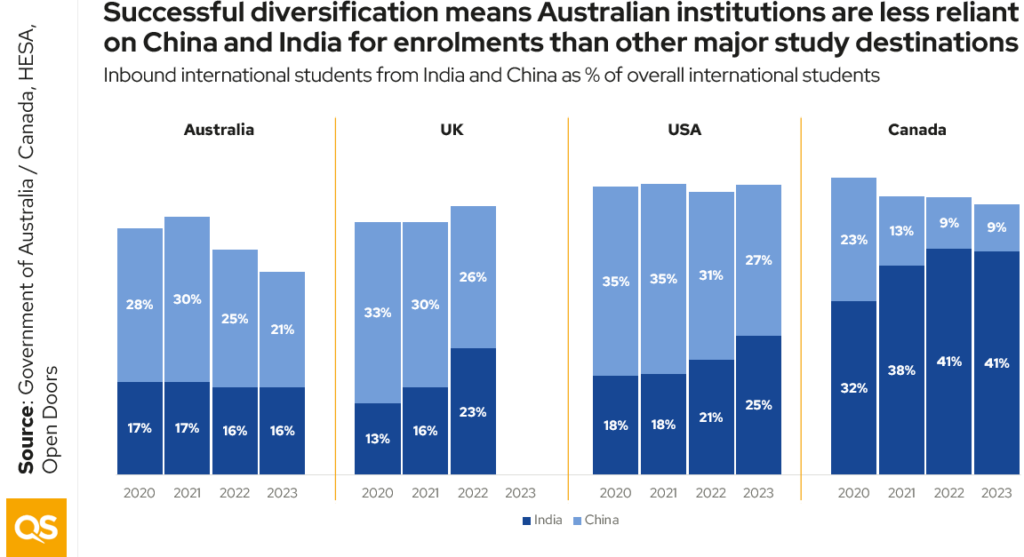
Using Government of Australia data, we can see that this diversification has been driven by increases in enrolments from South America, South East Asia, and South Asia.
To be clear, this is good news – a recruitment pipeline is much more likely to be sustainable if it’s not reliant on one or two markets. But how do Australian universities continue to succeed, when universities across the world still want to recruit international students, and in ever-greater numbers? What about when governments implement policy that directly impacts student decision-making?
Heading to The PIE Live Asia Pacific and want actionable insights to create a more sustainable student pipeline? Join us for our session titled “Reputation reset”.
Diversification markets exhibit different behaviours
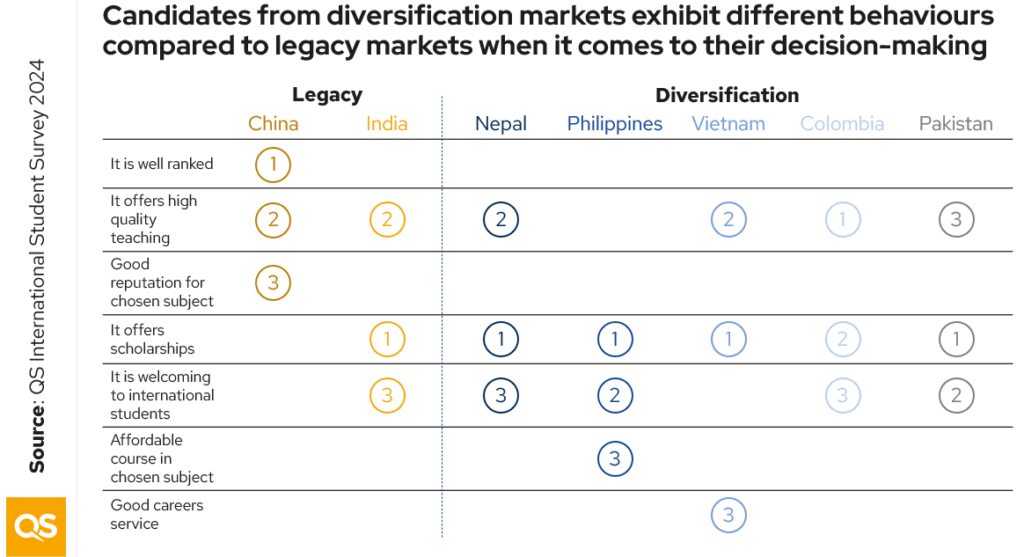
As you can see, these key diversification markets have different preferences – look at the Philippines compared to China. For institutions, this makes planning ahead a must, and nurturing candidates with messages that resonate with that particular market even more necessary. Available scholarships and a welcoming environment are looking like key factors for these emerging markets. In more good news for Australian universities, scholarships and pricing can be changed dynamically and quickly if necessary.
Looking at market preferences over time, they’re not particularly stable, with each cohort wanting different things – look at Vietnam, and how the importance of high-quality teaching has considerably dropped.
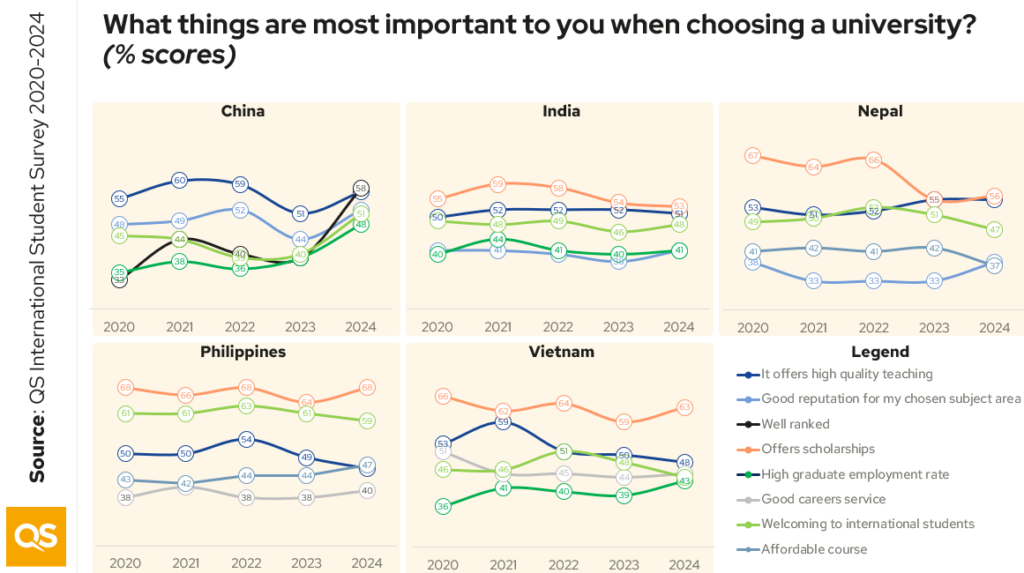
For institutions, this means a per-market value proposition is key for offer conversion.
A concern arises
In Australia, the new visa requirements pose a new challenge, and, unfortunately for universities, it’s having cut-through with students. According to the QS Country Perceptions Survey 2024, 34% of prospective students were aware the Australian government had implemented these new rules. 17% were less likely to consider studying in Australia because of them.
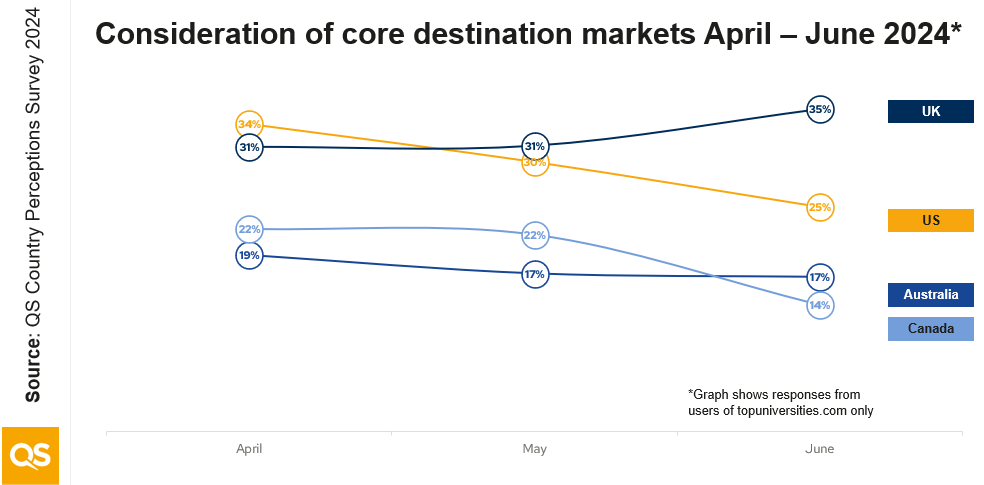
It’s dampening demand, too. As the graph notes, this comes as the UK government confirmed it would not change the Graduate route visa, further fuelling competition among the big four.
For a country whose image relies on quality of life, any impact to a welcoming environment poses risks. If you look to the ‘average image’ section below, you can see ‘Expensive’ and ‘Challenging visa process’. The visa changes only exacerbate these issues. With diversification markets already indicating that they are cost sensitive too, Australian universities are in a difficult position.
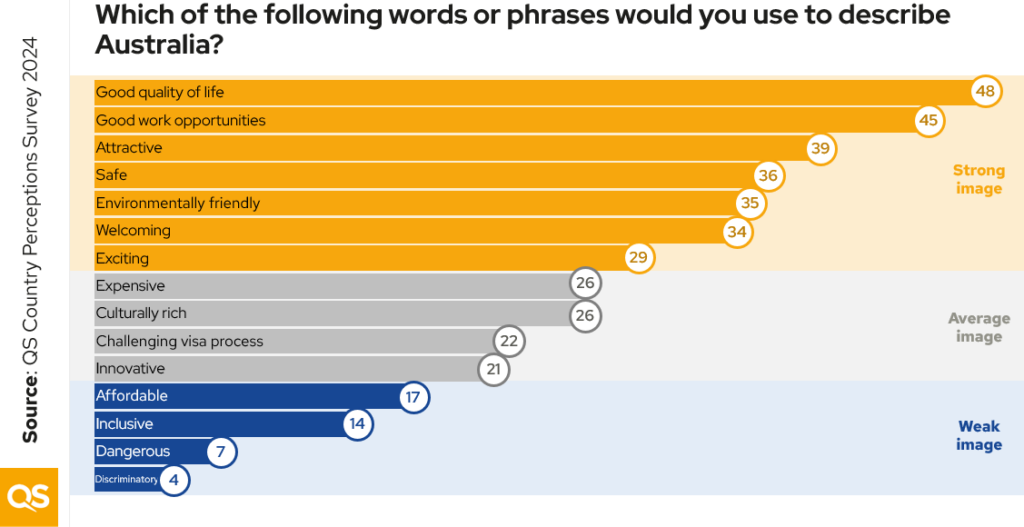
Our recommendations
As we will detail during our session at The PIE Live Asia Pacific, we have recommendations for institutions
- Hone in on a welcoming environment
Australia already has a positive reputation for a good quality of life, and a strong association with a welcoming environment. In the face of visa changes that may impact this perception, Australian universities should consider how they can evidence that their town, city, campus or community is welcoming. From QS International Student Survey 2024 data, we know prospective students put a lot of stock in independent rankings, ratings and assessments – investigate opportunities to reassure students that they’ll be studying in a safe and friendly environment, such as the Purple Flag.
- Leverage dynamic pricing
Tuition price is one factor universities can very directly influence. Consider how and where your institution can maximise targeted scholarships and dynamic pricing to drive conversions.
- Continue to improve institutional performance
While rankings are not a major influence for students from diversification markets, ensuring strong institutional performance across each of the QS World University Rankings indicators is a key way to continue recruiting from China. 53% of students interested in Australia said rankings were a useful information source when researching a university (QS International Student Survey 2024). 34% said that one of the most important things for them was to study at a highly ranked university in a prestigious country.
Focusing on improving your sustainability and graduate outcomes is one way to make a real difference in your overall ranking, and in the minds of students:
- Employability and sustainability both account for 5% of your overall QS World University Ranking Score
- 65% of students interested in Australia said environmental sustainability was very or extremely important to them
- 45% placed a high graduate employment rate among their top five factors when choosing a course.
Improve in these metrics, promote your innovations, and recruit effectively.



